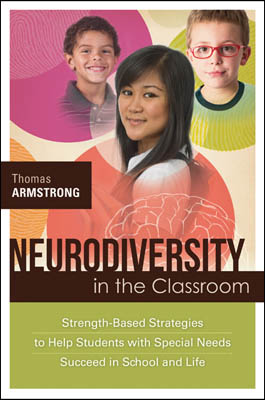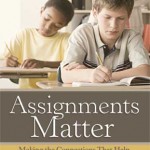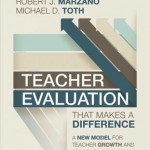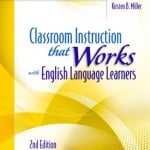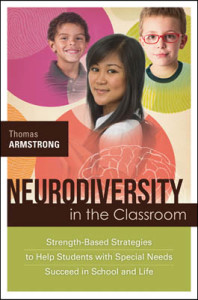 In Neurodiversity in the Classroom, best-selling author Thomas Armstrong continues to present concepts that stand to revolutionize the way students with learning disabilities are taught and thought of by educators. I am no stranger to Armstrong’s work and became a proponent of his as a young teacher when I read his work on multiple intelligences. His work always forces me to rethink what it means to be “labeled” and how those labels can do more to prevent one from reaching their full potential than the actual characteristics displayed that caused one to be labeled in the first place. Neurodiversity in the Classroom, yet again made me experience a paradigm shift in my thinking as it relates to educating those with learning differences.
In Neurodiversity in the Classroom, best-selling author Thomas Armstrong continues to present concepts that stand to revolutionize the way students with learning disabilities are taught and thought of by educators. I am no stranger to Armstrong’s work and became a proponent of his as a young teacher when I read his work on multiple intelligences. His work always forces me to rethink what it means to be “labeled” and how those labels can do more to prevent one from reaching their full potential than the actual characteristics displayed that caused one to be labeled in the first place. Neurodiversity in the Classroom, yet again made me experience a paradigm shift in my thinking as it relates to educating those with learning differences.
This book thoroughly describes the new concept on human diversity, neurodiversity, and it provides easy, practical strategies for educators to implement in their classroom that will help students’ with special needs to focus more on their strengths while still working to improve their weaknesses. This new concept, if implemented, will have a profoundly positive impact on not only the education, but the self-esteem of students with disabilities.
I found this work to be very informative and organized. I particularly liked the fact that he focused on five categories of learning disabilities: learning disabilities, attention deficit hyperactivity disorder, autism, intellectual disabilities, and emotional and behavioral disorders. He discussed in great detail the strengths, learning strategies, potential career paths, assistive technology, successful adults with disabilities, modification and even how to integrate the strategies and assessments for each category with the Common Core State Standards.
I recommend this work to both general and special education teachers who are interested improving the quality of education they provide to students with disabilities and those without.
Cindy Lumpkin
The LD Coach
—
Disclaimer: This book was the possession of the reviewer. Neither The Educator’s Room nor the reviewer received any compensation for this review. The opinions contained in this review are those of the reviewer alone and were written free of any obligation or agreement with the publisher. If you have any questions regarding book reviews, see our full disclaimer or contact The Educator’s Room Book Review Editor.

